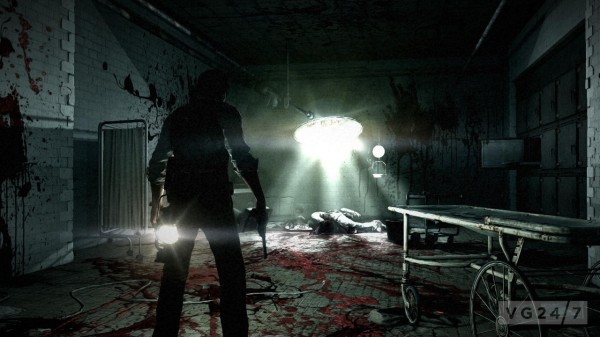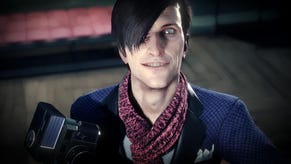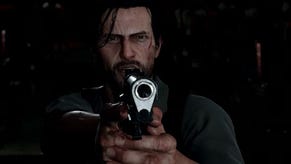The Evil Within: Shinji Mikami’s bloody return
The Evil Within creator Shinji Mikami is back with a new studio and a horror-filled nightmare to remind us all how to feel afraid once more. Stace Harman checks out the game and reports from hell.
As the first project to come from Shinji Mikami’s Tango Gameworks, a lot is expected of The Evil Within. The creative director and grandfather of the Resident Evil series is hoping to provide a respite from adrenaline-fuelled action-horror titles by providing a tense, slow-burning survival horror experience.
There’s also a sense of anticipation around just how disturbing Mikami can make The Evil Within through utilisation of the extra power afforded by high-end PCs, PlayStation 4 and Xbox One.
At a recent pan-European press day, Bethesda provided a glimpse of the title in the form of a 30 minute gameplay demonstration piloted by studio producer Jason Bergman.
The action revolves around Sebastian, a police detective who responds to an incident at a psychiatric hospital after contact is lost with the original unit that was sent in to investigate.
Sebastian takes with him two AI companions and upon arriving at the scene the trio encounter the eerie quiet of a number of abandoned police cars.
The question of where everyone has disappeared to is soon answered as the companions enter Beacon Mental Hospital.
The reception hall is silent and littered with bodies lying in sticky red puddles, slumped over desks and collapsed in chairs. Posting one of his companions at the door, Sebastian begins to investigate the scene and soon stumbles across a bank on monitors displaying the hospital’s CCTV cameras.
Here, Sebastian watches as a ghostly figure kills three police officers in quick succession; materialising next to each one as they fire their weapons ineffectually at the spectre. As Sebastian turns away from the console he comes face to face with the ghostly figure of a young girl who lunges for him.
Sebastian regains consciousness and finds himself hanging upside down and bleeding; heavy wet drips splashing onto a dirty tiled floor as classical music plays in the back ground. He’s surrounded by corpses who have met their end in the same predicament but before he can think about trying to escape a hulking brute wearing a mask enters the room and proceeds to hack at something, grunting with the effort.
A series of wet, squelching blows are heard, culminating in a final thud and a sickening tearing sound as the Leatherface-lookalike achieves his grisly goal and walks back into view carrying a severed torso.
It’s at this point that Bergman starts his campaign proper; extricating Sebastian from his bonds he stealthily retrieves a bunch of keys and unlocks a door in the hope of making good his escape.
However, this serves only to trigger an alarm that brings his captor running. What follows is a game of harried hide-and-seek as Bergman guides Sebastian through a series of corridors and rooms, pausing to crouch behind counter tops, hide in lockers and throw objects to distract the hulking brute.
By this point, Sebastian’s adversary has fully adopted the Leatherface persona by acquiring a chainsaw that hums and chugs as he stalks the halls, giving audio clues as to his whereabouts even when he can’t be seen.
It’s a tense chase sequence, as the chainsaw-wielding maniac occasionally picks up Sebastian’s trail, at one point trapping him in a caged room and setting in motion a spinning blade trap that closes in on Sebastian as he hobbles through a narrowing gap.
Being unarmed, it’s apparent that if Sebastian is caught it’ll be an instant game over, but Bergman expertly negotiates his escape and makes it back up to the entrance hall. He makes a beeline for the exit and there’s no sign of the colleague that he left guarding the entranceway, but that’s soon forgotten as Sebastian emerges from the hospital.
The sight that greets him suggests that either some natural catastrophe has occurred while Sebastian was playing cat and mouse or that there is perhaps supernatural forces at work. Given the asylum setting, it’s possible that the wasteland that Sebastian is confronted with could be the result of his own damaged mind.
This last option is given further credence in a latter part of the demo, where Sebastian appears to either have ventured below the asylum-proper or is in another location entirely. It’s here that we get our first glimpse of the standard enemy types; misshapen humanoids that shuffle like zombies but whose heads appear swathed in bandages and that have medical implements embedded in their torsos.
Bergman takes one down with a headshot and another with a couple of shots to its legs and then sets it on fire, which he highlights is a way of conserving ammo. Following this area is a sequence in which Sebastian is holed-up in a hut, which is reminiscent of Resi 4.
As attackers attempt to break in through the windows Bergman lays what appear to be home-made explosives, which point to a potential crafting mechanic. The exact form of the inventory and UI are still to be decided but Bergman does inform us that HUD elements will be kept to a minimum so as not to threaten player immersion.
Despite the makeshift explosives, Sebastian is quickly overwhelmed and forced to escape to the basement of the structure which leads to a corridor that warps and elongates as Sebastian traverses it. Finally, the door at the end of the corridor is flung open to reveal a sickening surprise.
Seeing two, disconnected, gameplay sections it’s difficult to get a sense of pacing but Bergman suggests that the game is divided up into two main play-styles. Exploration areas are open-plan and involve gathering resources, while the horror areas are more confined and much more scripted and linear. The attack in the hut, for example, will only trigger the subsequent corridor section once a certain number of assailants have broken through the barricades.
This suggests that it’s a fight that cannot be won, which is fine if you pass it on the first attempt but the tense atmosphere will quickly dissipate if you have to retry the section several times armed with the knowledge that you’re just trying to hold out long enough to trigger the next area.
While other people will occasionally buddy-up with Sebastian, The Evil Within will remain a single-player experience, which is really the best way to ensure the tightly scripted set pieces achieve maximum potency.
However, while the stealth section at the start of the game looks well-orchestrated, it lacks originality. In fact, it’s surprising just how many standard horror tropes Tango Gameworks has relied upon throughout the gameplay that it’s shown-off so far.
Mikami’s flair for survival-horror lies in creating isolated and imposing environments, tense atmospheres and pitting the player against heavily-stacked odds. I’m interested to see how he applies this to a mental hospital that’s in the middle of a modern city as the brief segments I’ve seen so far don’t quite match the triumphant first showing of The Evil Within that I was hoping for.
That said, it is far enough removed from recent, action-orientated, Resident Evil titles to give rise to the hope that one of the pioneers of modern survival-horror can make a title that’s truly worthy of the genre.
The Evil Within will be published by Bethesda for release on PC, PS3, 360, PS4 and Xbox One in 2014.














